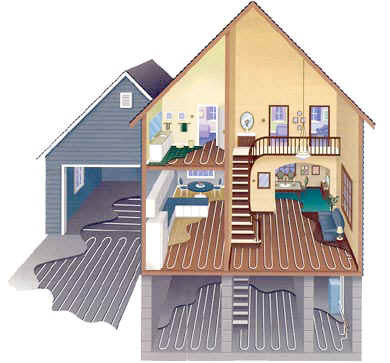
Living with radiant-floor heat
From an energy and comfort standpoint, does it make any sense to turn down the thermostat at night when you have a radiant-floor heating system?Does it pay to turn down the heat at night when you have a radiant-floor heating system? David Meiland and a heating contractor are having trouble seeing eye to eye on that question.
Meiland says the house they’re discussing is a slab-on-grade with R-10 insulation below and PEX tubing cast into the slab. In another part of the house, the floor is framed, with PEX installed below in tandem with aluminum plates that help distribute the heat. The boiler is a 30-kW electric model with an outdoor reset.
In a Q&A post at GreenBuildingAdvisor, Meiland writes, “The heating contractor advised the homeowner that setting the night-time thermostat temperature too low would cause the system to work very hard in the morning to get the slab back up to temperature, and therefore waste energy.
“My opinion is that lowering the setpoint at night is a good thing, as the system will put fewer BTUs into the house, saving energy. When the system ramps up in the morning, it will reheat the slab without any loss of efficiency. Fewer total BTUs will be put into the house.”
Meiland thinks the heating contractor has it wrong, confusing a period of high demand in the morning with low efficiency.
That’s the focus of this month’s Q&A Spotlight.
High-mass floors respond slowly
While there is a mix of flooring types in the house, several readers pointed out that the high mass of a concrete slab will not change temperatures very quickly — and that has a bearing on the practicality of turning down the heat at night.
Cramer Silkworth, for example, writes that if the house is well insulated, its occupants may not experience an overnight drop in temperature even with the thermostat turned down. “The…
Weekly Newsletter
Get building science and energy efficiency advice, plus special offers, in your inbox.

This article is only available to GBA Prime Members
Sign up for a free trial and get instant access to this article as well as GBA’s complete library of premium articles and construction details.
Start Free TrialAlready a member? Log in





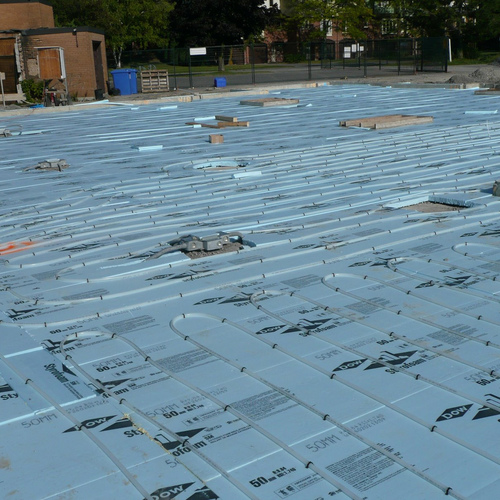
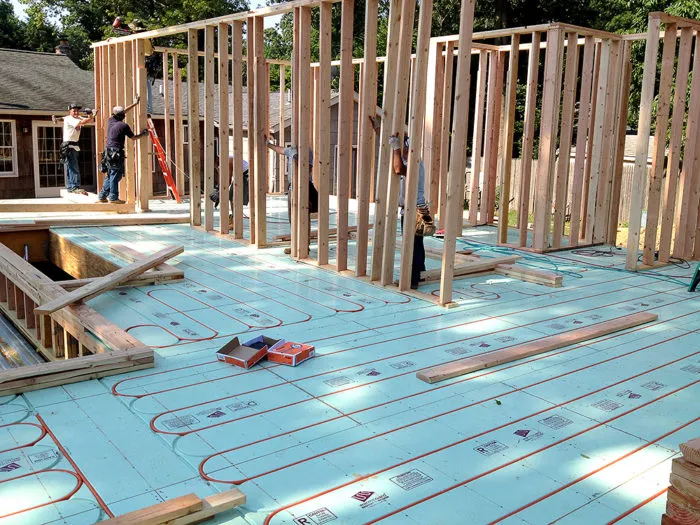
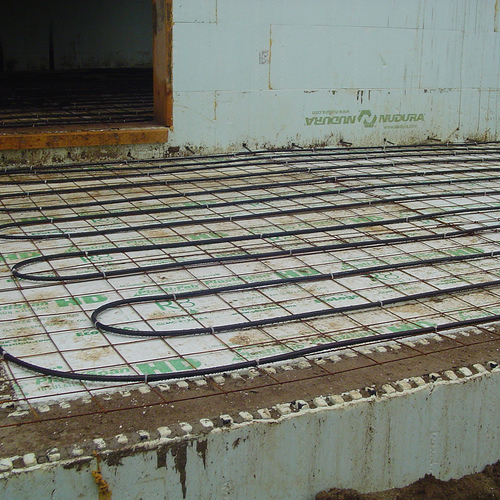
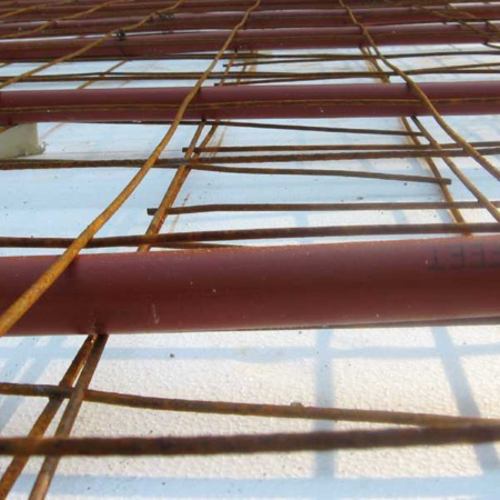






17 Comments
overshoot
temp overshoot is definitely possible when controlling via the air temp. Better to use a floor temp sensor, but that can also overshoot; it depends on how "close" the floor sensor is from the tubing. We have 3" thick poured concrete over our subfloor and luckily the floor sensor is close enough to the tubing. We experience basically zero overshoot.
SURFACE temps in the low to
SURFACE temps in the low to mid 90's? that's a high output maximum peak load condition in an incredibly high output situation, not a typical operating condition. typical operating conditions has a floor of MAYBE the high 70's. If you have a low to mid 90's measured floor temperature, you're measuring wrong or using a wildly inappropriate water temperature for your radiant system.
Second, slab radiant isn't very expensive... I wish that meme would die. radiant of course can be expensive, but piping a slab is often cheaper than baseboard or even air systems.
Fact is setback will always save something. always. it may not save much, but it will always save something. problem is that it also reduces comfort after recovery, and it may cost more for a programmable thermostat than you'd ever save in fuel in a high mass/tight envelope situation.
Energy savings, yes, but not much
An electric boiler works at the same efficiency whether idling along at low power or pegged balls-to-the-walls at max. The house loses less heat overnight if the house is at a lower temperature. The math on both is simple.
But the mass of the slab results in a slower drop in temperature down to the overnight setback value, so the potential savings from setbacks are blunted. (It's the entire thermal mass of the house that's in play really, but that's probably dominated by the slab in most houses.) To tolerate the delay in bringing the slab back up to temp requires either an early start to the morning recovery, or tolerance of a bit of coolth in the AM.
With more responsive above-the-subfloor-tubing low mass radiant floors (eg WarmBoard or DIY versions thereof), you can reap much better savings from overnight setback strategies with minimal impact on comfort.
It's true that in high-R buildings the extra expense of radiant floors buys fairly little in additional comfort, since the floor temp is barely more than a few degrees above room temp, devoid of that toasty "cruisin' in yer socks" cush-factor so appealing in older, or code-min-R houses. With an electric boiler's COP of 1, if the expense was put into heat pumps/mini-splits rather than low-temp radiation, bumping up the interior temp a few degrees buys back a lot in comfort.
reminds me
this reminds me of the old turn the light off or leaving the car running question...
"don't flick the lights off in a high use area as it takes a lot of power to turn them back on, best to just let them run"
also
"don't turn the car off while idling for a little bit because it uses more gas to restart it than to just let it idle"
radiant floor night setback
I setback my radiant heat by one degree at night in my cottage with heat transfer plates. In the main house I do not setback because the pipe spacing in the concrete slab is to far apart.(24") I got cheap on this fifteen years ago and now I do six inches apart with r 30 foam under the slab. I set it back once when I went on a trip and it took a couple of days to get back to the disired temp. This slab has a sand bed under it. So I would recomend trying to set the t- stat back by one degree and having it come back up a few hours before morning. I like to do solar thermal combi systems in the homes that I build and radiant works very well because one can run a very low water temperature as long as the insulation is to Passivhaus standards. I would look to other ways to save energy like wearing long underwear inside and setting the thermostat down to 63F. Dropping the temperature by one degree doesn't sound like much but it is a lot of btu's in reality.
recover
wow, people have some long recovery times. We have radiant lines in 3" concrete on top of subfloor and also radiant lines in the basement which has minimal underslab insulation. I measure recovery time in hours, not days. A small zone of 3" concrete 16x16' - i usually do a setback in the winter of up to 4º and recovery is only a few hours max. This is probably a combination of it being a "small" area and also the temp set point that our boiler has. Depending on the outside temp, our boiler would spit out between 90-130º water and only provides the hottest water on the coldest outside temps. I think our min outside temp is set to around 4º
our basement slab recovery time is longer but still measured in hours than days.
Lance, 4 degrees 4 hours
Lance, 4 degrees 4 hours radiant, 4 minutes hot air.
Also 4 degrees is nothing. I build weekend use 2nd homes that set back 25 degrees. Try that with slab radiant and let me know how many DAYS to recover.
Ok, no soup for me
Really? (response to bob coleman)
"don't flick the lights off in a high use area as it takes a lot of power to turn them back on, best to just let them run"
also
"don't turn the car off while idling for a little bit because it uses more gas to restart it than to just let it idle"
The thermal mass of an incandescent light bulb takes less than a 20 milliseconds of ramp time to full-on/full-off.
Starting a car is worth about ~15 seconds of idling fuel.
The stored heat in the substantial thermal mass of a concrete slab is continuing to emit for hours, even with zero input from the boiler, and takes hours to come back up to temp even if the boiler is ridiculously oversized for the heat load and running water temps at the rated maximum for the PEX.
It's not the same argument at all. The comparative order of magnitude are 0.01 seconds for the bulb, 10 seconds for the car 10,000 seconds for the radiant slab. The slab's time constant is literally a million times that of the light bulb case, with an off cycle of only couple time constants for the slab compared to thousands of time constants of off cycle for the light bulb.
With low-mass radiant with the tubing above the subfloor you get better than an order of magnitude shorter time constant, making it far more suitable for reaping real savings from a setback strategy.
recover 25º
havent tried to recover from that large of a delta but i still think recovery in my case would take hours (many more of course) and not days. Again, talking about a pretty small zone here, 16x16 approx. My 4º value is a balance/tradeoff between setback temp and convenience of recovery time. Often, the slab doesnt even cool down that far in the winter for the 10-11 hrs that we are away during the day. (outside temp dependent of course)
Turning down heater at night
How would you save money/energy? It takes "x" amount of BTU's to heat a home daily ... How can you heat the "same" with "less BTU's" ??
Response to Chris Hederson
Chris,
Q. "It takes "x" amount of BTU's to heat a home daily ... How can you heat the "same" with "less BTU's" ??"
A. It's simple -- you lower the thermostat setting. This saves energy -- but only if you don't mind the fact that the house is cooler while you are snuggled in bed or away from home, at work.
Turning down heater at night
Thanks for taking the time to respond to my question Martin.
I just have a hard time wrapping my head around this concept.
When turning down the heat at night, the temperature of the whole house structure must cool down. So when turning the heat back on, the heater has to heat the whole structure back up again. I would think that the heater would have to work longer/harder to compensate for the cooling effect that the structure of the house is having on the environment, thus using more BTU's in the process. Since a colder surface radiates in the same fashion as a warmer surface. Just like when sitting near a cold window, the side of you that is closest to the window feels much cooler (as the cold surface is radiating at you). At the end of the 24 hour cycle of heating, whether you turn down the thermostat or not, you need the same amount of energy input to keep the average daily home temperature the same.
Please advise if I am missing something, as I would like to learn more on this topic.
Keep up the great work at GBA, as I save all of your news letters and will build my house around your guidelines !!
Response to Chris Hederson
Chris,
Let's leave aside the question of setback in a house with hydronic tubing embedded in a concrete slab floor -- that's a special case.
Assuming we are talking about a fast-responding heating system like forced air heating, it always takes fewer BTUs to heat a house to 60 degrees than it does to 72 degrees. The more hours of the winter spent at 60 degrees, the lower your energy bills.
If you put on a sweater and a hat, and leave the thermostat at 60 degrees all winter long, you'll save even more. But even if you only turn down the thermostat for 8 hours a night, you will still save energy.
Superinsulate, use less or no radiant
Superinsulate, use less or no radiant. Setback hot air systems. Never setback poured concrete radiant.
Just say no to radiant setback. And if you say yes, no soup for you.
What about electric?
I've retrofitted radiant electric in several rooms of two houses. One house is in a cool climate and we added 10mm insulation over a 30-year-old slab (assuming no insulation below) then radiant electric bedded below slate - about 250 sq ft. The other house is in a mild climate so we used no added insulation. In both cases the heat is run by setback programmable thermostats with floor sensors. These Aube thermostats sense the floor temp and calculate when to come on to meet the target temp/time that has been set.
In other words, on a cold night, the thermostat will sense the lower temp and turn the floor heating up sooner. Both systems have worked out well and at relatively low cost. The cool climate house has a HWH (gas fired) system as well, so the majority of the house heating s done by that, and the UFH is spot comfort heating.
BTW - isn't one of the laws of thermodynamics that the greater the heat differential, the more the transfer/loss? I suspect this is a relatively complex equation to work out, and I look forward to seeing the results.
19 years:
Well, I lived on the central coast of CA where the winter temps were from 9 to 25 at night with propane and forced air in a single level 1400 sq ft house. My electric was about $75/month & propane was about $100/month when used normally (eventually went to Dyson space heater where I was occupying; brought that down substantially).
2 years:
Then moved to Sierra Nevadas in a 2 story, 1500 sq ft 40 year old house completely renovated with double drywall throughout (cheaper than removing all wallpaper) with 220V electric baseboard heaters (4 upstairs and 1 in each bdrm downstairs) and programmable Honeywell t-stats ( 2 up and 1 each bdrm). The temps were in the teens and 20s for lows (but with much snow lingering). We were always cold and my electric bill in winter was $400-600! (Also had a heat-a-lator sealed wood burning fireplace upstairs to supplement the heating. Used it almost every night in winter. Put out a lot of heat too.)
2 months (so far Dec and Jan) but don't plan to move again:
Moving on to current house. High desert in NM. Lows in single digits in winter. Have 4 zone radiant floor heating. When 4 outside, comfy inside even with radiant heating in off position (mercury t-stats; crappy. Just replaced 1 zone with Honeywell heat on/off t-stat). Will see how that works but house is warm and comfy always and electric bill is about $40/month (so far, just moved here Dec 1) and nat gas is level payed at $66/month all year. Most comfortable, quiet house I ever lived in. Very cheap (relatively) to heat. Evap cooler for summer (15% humidity).
My opinion: Radiant floor heat is cheaper, warmer, less fluctuation and easier to control with 4 zones. House is 1830 sq ft.
Of course local utility rates, house tightness & R-values could explain a lot here...
Electricity is metered in kwh, not dollars, and vary by quite a bit from location to location. Gas & propane prices vary quite substantially too.
No doubt radiant floors are more comfortable than electric baseboards, but electric radiant is not substantially cheaper.
Log in or become a member to post a comment.
Sign up Log in